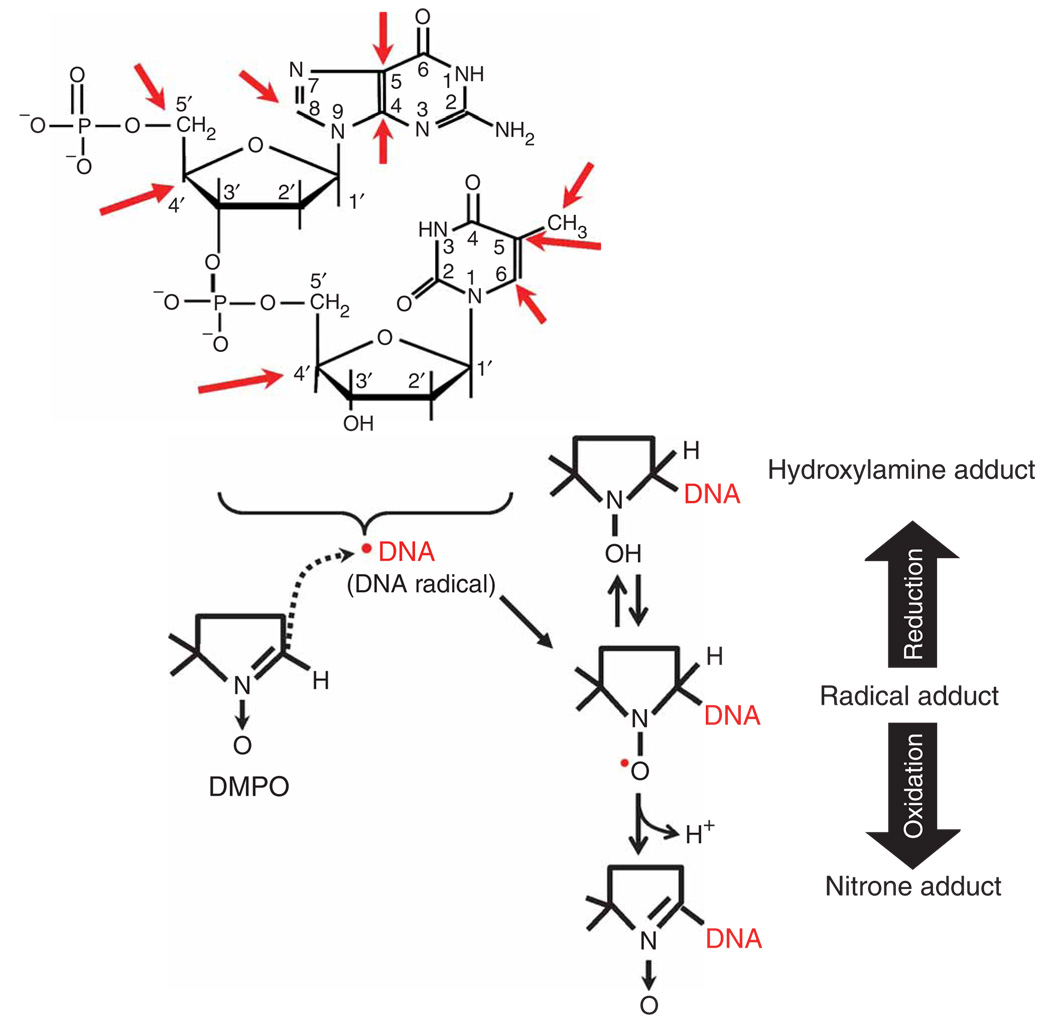Figure 2.
Schematic representation of the generation and trapping of DNA radicals with the nitrone spin trap DMPO forming DNA nitrone adducts. DNA is oxidized in cells and tissues under oxidative stress with the intermediacy of DNA radicals. DNA radicals can be located on different components of the DNA (i.e., bases or sugar) and at different positions on these components (marked with red arrows). DMPO can trap, in situ, in real time and with high efficiency, many, if not all, of these radicals, preventing further oxidative consequences (e.g., 8-oxo-dG and fragmentation). The trapping of DNA radicals with DMPO involves the creation of a new covalent bond between the DNA molecule and the spin trap, forming paramagnetic radical adducts that quickly (in minutes) decay by reduction or oxidation to ESR-silent species, the hydroxylamine adduct or the nitrone adducts, respectively. Nitrone adducts are resistant to degradation during phenol/chloroform extraction. The nitrone adduct is recognized by the anti-DMPO antibody in the immunoassays (see PROCEDURE).

